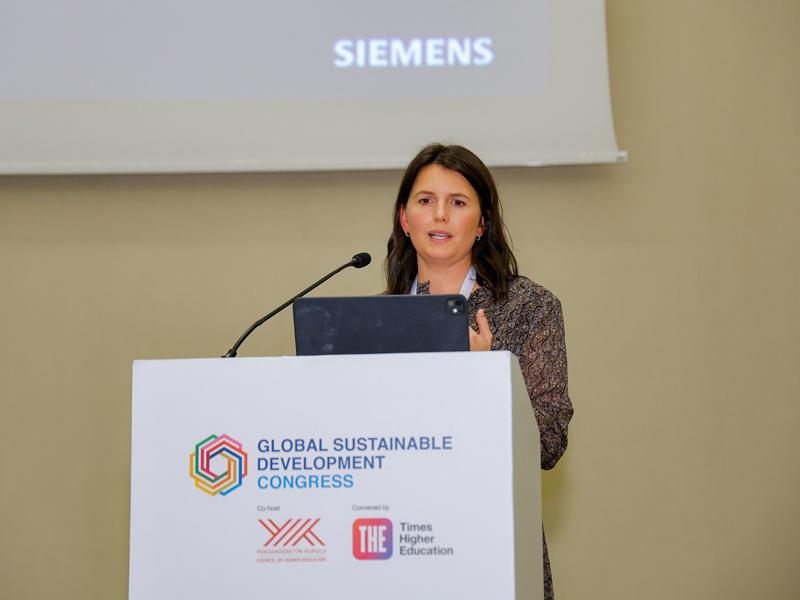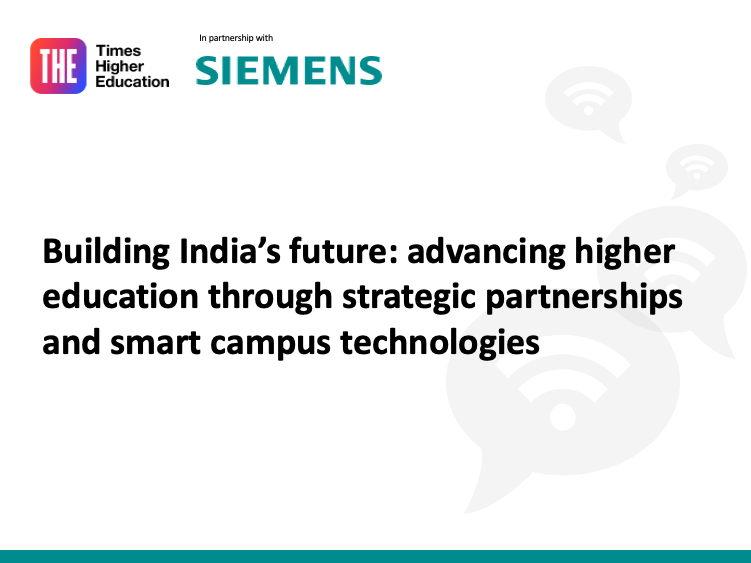As engines of knowledge and innovation, universities are uniquely equipped to lead sustainability initiatives that support global climate goals. With complex physical estates housing buildings of different types, ages and uses, they must first lead this transition within their campuses.
One of the insights from the Covid-19 pandemic was that when the space utilisation at many universities dropped to zero, their energy consumption only went down about 15 per cent, highlighting the lack of automation across universities, said Faye Bowser, vice-president of the higher education vertical at Siemens.
“One thing that Siemens thinks a lot about is how sustainability is reflected in the campus operations and the campus environment, where students live and learn, and how we can build an innovation culture into the infrastructure,” said Bowser.
Bowser spoke about the steps institutions can take to enhance their campus environment while working towards sustainability. The first step is understanding the strategic outcomes of the university itself and connecting them with its sustainability goals. Universities can then find the resources already available on campus that can be integrated and optimised, including systems and data.
“It’s better to have a data-informed decision and strategy rather than working on a hypothesis of where to focus,” said Bowser. Based on global research conducted by Siemens, the two most valuable data sets for decarbonisation and resource efficiency in the higher education sector are energy consumption and user behaviour, she added. However, universities sometimes struggle to translate data’s strategic value into concrete action.
Bowser highlighted the successful partnership between Siemens and the University of East London in the UK, which covered four key pillars around net zero: reducing energy demand, identifying sources of energy production on campus, designing a living laboratory to manage data, and building an inclusive talent pipeline. “It gave us a roadmap about where to focus now, what’s technically and economically viable, what to look at next and where you can go eventually. Because things that are going to be possible eventually might not be feasible today, but you want to understand what’s on the horizon.”
Bowser said that universities sometimes fall into a false dilemma of choosing between green goals and other priorities. “It’s not a binary choice of one or the other,” she said. Innovative steps towards sustainability goals should contribute towards multiple ambitions universities have, such as creating intuitive spaces and improving students’ well-being and learning experience on campus.
“It’s about making sure that we’re not just looking at technology for the sake of technology itself,” said Bowser. “It’s thinking about how to use technology with a purpose and how to have it from the practical side, so that you can make faster, better decisions, have transparency and accountability, and access robust, real-time data points from the infrastructure.”
Find out more about Siemens.


comment